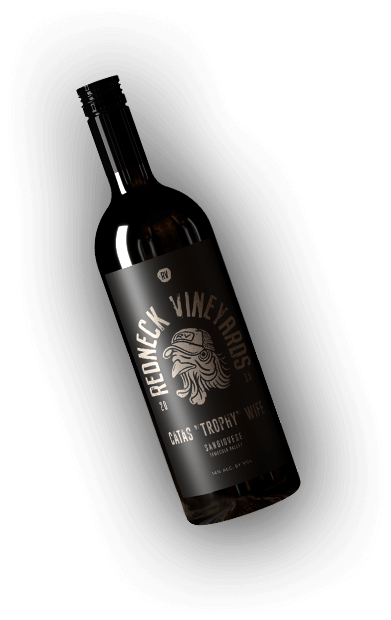Uncategorized
Why Wine Can Be Pricey
Wine prices are kind of complicated. In theory, the price of a bottle of wine should increase directly in line with its quality. But quality is at least partially subjective. Further, we’re all easily biased by price. More than one study has shown people largely find a wine to be more delicious if it comes with a higher price tag; this bias disappears when the price is unknown.
So, why is some wine expensive? (Basic economics to an extent.) And why are some wine prices so insanely high? (Psychology!) The good news is that plenty of high-quality, delicious wine is available for an affordable price, no matter your budget. The bad news is that you might have to sample quite a few wines before finding your well-priced favorite. (Wait, that’s not bad news!)
We suggest you try some wines from Sweet Oaks — they’re all reasonably priced.
Winemaking Is a Lot of Work
Here’s the basic economics explanation for wine prices. First, winemaking is a lot of work and takes a lot of raw materials, resources, and labor. From planting and harvesting grapes to fermenting, blending, bottling and selling, there are countless steps in the process of making wine, and they all have to be done with considerable care and expertise.
The costs of raw materials make up a decent portion of wine prices. The cost of grapes for a bottle of wine in California ranges from around $2.50 to over $5, with quite a bit of variation based on grape and region. Cabernet Sauvignon grapes, for example, are more expensive than Merlot grapes, which is one reason some varietals fetch higher prices. Grape yields vary due to uncontrollable climate factors, so the answer to “why is some wine expensive?” might just be the weather during that one week in April 2019.
Wines aged in oak, especially new oak, cost more because oak barrels are a shockingly expensive piece of equipment. American oak barrels start at around $600, while European oak barrels range from about $1,200 to over $2,000. Also, add a dollar for every year of aging to the cost of wine, as aging is time-consuming and requires more resources.
Other factors that go into wine prices include the cost of land, irrigation, utilities, and labor — everyone from the field worker to the office staff, plus marketers and distributors, needs to be paid a fair wage. Finally, don’t forget the cost of transportation. If you’re a U.S. consumer choosing between a wine made in California and one made in New Zealand or Argentina, consider the additional expense and logistics for shipping worldwide versus domestic shipping. It all gets reflected in the final retail price.
A significant — often the most significant — portion of wine prices is markups. Wholesalers and retailers add to the basic cost of every bottle of wine to take their cut. According to one wine expert, only about $5 of a $20 bottle of wine is due to the cost of winemaking; the rest is all markup. Restaurants raise their markups even further, explaining why wine in restaurants is so pricey.
Small Wineries Have Higher Costs
Many wineries, including the majority of California’s 4,200-plus wineries, are family-owned businesses producing wine on a relatively small scale. Instead of asking, “Why is some wine expensive?”, ask why is some wine so cheap. The answer is economies of scale from industrial-size operations. Those under-$10 bottles you see in the supermarket are only possible due to massive output levels. The downside is less attention to detail and lower-quality wines due to the emphasis on high yields.
In contrast, smaller wineries concentrate on smaller yields with higher quality and more intensely concentrated flavors. As a result, wines made in smaller batches are lower in supply and higher in quality and therefore fetch higher wine prices.
Winemaking as an Art (and Science)
Making beautiful wine takes considerable knowledge, experience, and talent. It’s truly an art and a science, and a winemaker’s judgment makes all the difference between a great wine and a not-so-good one. When everyone involved in making wine has that rare combination of attributes, the resulting wine will be exceptional — and therefore, expensive. The best winemakers know their worth and expect to be compensated accordingly, which affects wine prices. However, like works of art, every consumer has different tastes. This is why cost and deliciousness can never be perfectly aligned.
Another of the top answers to the question “why is some wine expensive?” is perceived value, a factor in the prices of all luxury goods. It’s the almost limitless increase in wine prices, well above and beyond production costs, that some consumers are willing to pay for a product they consider superior in name or reputation. So while the difference between, say, $15 and $45 wine prices might come down to the costs of producing a higher-quality wine, the difference between a $45 bottle and a $300 one is almost entirely due to perceived value.
The Weird World of Extremely Expensive Wines
The world record price for the most expensive wine stands at $558,000, paid in 2018 for a 750 ml bottle of 1945 Domaine de la Romanée-Conti, Romanée-Conti Grand Cru. On the other hand, wines priced at $500 and higher typically sell out immediately. How can this be? Welcome to the world of uber-wealthy wine collectors, and it is entirely alien to the vast majority of wine drinkers.
Wine prices in the thousands reflect rarity, and their purchases are usually status symbols rather than any reflection of deliciousness. Unfortunately, the fascinating story of the biggest wine-fraud case in history shows that many of these deep-pocketed wine collectors cannot tell the difference, taste-wise, between a bottle worth tens of thousands and one that’s a lot less special indeed.
Always Look Beyond the Price
Most wine experts don’t recommend you drink cheap wine, but they agree that you can get an outstanding, high-quality wine starting at around $20. Once you eliminate the lowest quality options, choosing a decent wine to suit your budget mostly comes down to personal taste. Choose an approachable wine if you’re a beginner, and put a little thought into flavor profiles once you’ve established your preferences. This will ensure a much more enjoyable wine drinking experience than focusing only on price.
If you’re looking for an affordable, delicious range of wines, look at the wonderful offerings from Sweet Oaks.



